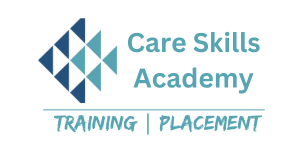In today’s technologically driven world, the demand for skilled technicians in electronics is growing rapidly. One of the most essential skills in this field is PCB (Printed Circuit Board) repair, as PCBs are the heart of most electronic devices, from smartphones to computers and home appliances. Understanding how to diagnose and fix problems with PCBs can open doors to lucrative career opportunities. If you’re looking to develop expertise in this area, enrolling in a PCB Repairing Course is the right step.
Why Learn PCB Repairing?PCBs are complex, multilayered boards that serve as the foundation for connecting various electronic components, including capacitors, resistors, and microchips. When a PCB malfunctions, the entire device can stop working. Knowing how to troubleshoot and repair these boards can save money for businesses and consumers alike.Professionals with skills in PCB repair are highly sought after across industries, from electronics manufacturing to appliance servicing and beyond. Whether you are an aspiring technician or someone looking to expand your technical skills, a PCB repairing course provides the foundational and advanced knowledge required to succeed in the electronics repair industry.What You Will Learn in a PCB Repairing CourseA well-structured PCB Repairing Course offers both theoretical and hands-on training. Here are the essential topics typically covered:1. Introduction to PCB and Its ComponentsYou’ll start with understanding the basic structure of a PCB, its layers, and the function of different components like resistors, capacitors, diodes, transistors, and integrated circuits (ICs). You’ll learn how these components work together in an electronic system.2. Soldering and Desoldering TechniquesMastering the art of soldering is crucial for PCB repair. This course will teach you how to handle a soldering iron, make clean solder joints, and desolder faulty components without damaging the board. This skill is key when replacing damaged parts or making modifications.3. Diagnosing PCB FaultsYou’ll learn how to identify various issues that can affect a PCB, such as broken traces, short circuits, or faulty components. By using multimeters, oscilloscopes, and other diagnostic tools, you will become adept at isolating and fixing problems efficiently.4. Repairing Damaged PCBsWhether it’s a broken trace or a burnt component, PCB repair courses teach you how to make the necessary fixes. Techniques include reflow soldering, trace repair, and the replacement of components. The training also covers the use of jumper wires and epoxy to restore board functionality.5. Safety PracticesWorking with electronic components requires strict adherence to safety guidelines. You’ll learn how to handle sensitive components, avoid electrostatic discharge (ESD), and use protective equipment to ensure both your safety and that of the device you’re repairing.6. Advanced TroubleshootingAs you progress, you’ll dive deeper into more complex troubleshooting techniques, including signal tracing and testing different types of PCBs such as single-sided, double-sided, and multi-layered boards.7. Software Tools for PCB DiagnosisMany modern PCBs require software-based diagnostic tools for effective troubleshooting. Some courses provide training in using these tools to analyze and repair more advanced boards.Benefits of Taking a PCB Repairing Course
Hands-On Experience: Most courses emphasize practical learning, giving students the chance to work on real PCBs, which helps in building confidence and expertise.High Demand Skill: With electronics becoming an integral part of everyday life, PCB repair technicians are in high demand across industries, including manufacturing, telecommunications, and consumer electronics.Career Opportunities: After completing the course, you can work in various sectors, including mobile phone repair, computer servicing, appliance repair, and even start your own repair business.Affordable and Short-Term: PCB Repairing Courses are usually short-term and affordable, making them accessible to a wide range of learners, including those who want to upskill or change careers.Continuous Learning: With new advancements in electronics, you’ll always have the opportunity to upgrade your skills, making this career dynamic and exciting.

